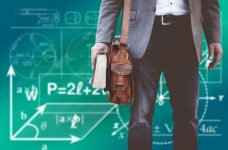The Hosting Dilemma

For anyone who has thought about starting an online business or even simply wanted to put up a personal blog, there’s one aspect of the whole process that often stops people in their tracks – web hosting. What is it? Why do I need it? What type is best? These are just a few of the queries that those new to building websites face when they begin to look at their hosting options. Here we look at those questions and give you the answers you need to make the right decision when you come to take out your next hosting package.
Take This Quiz: Are You A Micromanager?
Raspberry Pi – formatting and mounting USB drive

Let us say you bought a fresh new flash disk which most likely isn’t formatted. Just plug a thumb drive into the Raspberry Pi USB port and check if it has been detected by typing You should see in the list /dev/sda1 device, which is our USB drive: Since I want my drive to work on PC, it needs to be formatted with a FAT32 partition. First of all, you need to install Windows/DOS FAT32 support tools:
Selecting the Right Lead Screw for Linear Motion Application

There are many applications of lead screws. Mostly, they are used in linear actuators. In addition to this, lead screws are of different types and sizes. Selecting the right lead screw makes the job easier and ensures high quality and efficiency. Linear motion is a movement in a straight path. Linear motion solutions are designed in a way that they take advantage of this type of movement in order to carry out many tasks. The problem arises when it comes to the selection of the right screw for the job. There is great importance in carrying out a task effectively and efficiently. Therefore, choosing the right type of lead screw for the job is good. There are factors that a person should consider when selecting a lead screw for a particular task. They include: Thrust Thrust refers to the force required to move the screw as well as its load. Thrust is of two types. The first type of thrust is known as peak thrust, which occurs during acceleration and is experienced for a short time. The other type of…
Gearbest review: Setting up an Arduino workplace

Arduino has evolved into a popular development platform with various boards, shields, and strong community. Its simplicity and robustness allow tweaking, designing, and building things even if you have little or no experienced in electronics and microcontrollers. Today Arduino comes in many different shapes and processing power. Gearbest team was so kind to supply Arduino Mega 2560 R3 featuring ATmega2560 microcontroller. This is most powerful AVR-based Arduino having 54 I/Os, 256KB flash, 4KB of SRAM, and 4KB of EEPROM.



